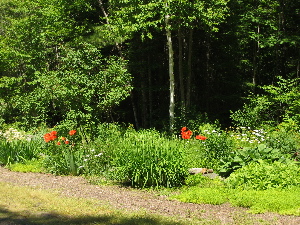DISEASED IRIS
This morning I heard from a gardener with iris that are in trouble. I thought other's of you might have similar problems, so here is the question, and the answer. I hope it's helpful and instructive for all of you.
"I have iris planted along the south side of my home. They have been there for over twenty years. The last time I separated them was about two years ago. Every year I cut them back and mulch with leaves for the winter. Lately the iris have become very yellow and the plants are droopy, although they did bloom great. I tried iron, but it didn't seem to help alot. Last year I added an automatic watering system to my flower beds. It runs(a soaker hose) 60 min twice a week. I am concerned if this is too much water? Is my soil just worn out? Any suggestions?"
It sounds like you have either some Crown Rot, or Bacterial soil rot. In either case, the treatment is about the same, and it’s something you need to control or lose all your iris plants!
First, Iris like to have a sunny, well-drained location. Remember that dark, moist environments are NOT desirable for healthy iris growth. If your iris are in the sun, I don’t think the soaker would harm it, but if gets soggy, or if it’s dark and moist, you may be in trouble.
Control for both problems is pretty much the same. Forget that they bloomed well. This problem has come AFTER the blooming, so that really doesn’t count. Perhaps this is caused by the “iris borer” which is a little worm found in the leaves or the rhizome. Sometimes you can see them. If this is the case, there are often little holes in the leaves where the borers entered.
Anyway, dig the iris rhizomes up. Get rid of ANY rotten or soft plant material. Use a knife to cut it off, and be merciless! Get some fungicide at the garden center and soak the soil (I’d treat the rhizomes as well) with it, in case it is Crown Rot (which is caused by a fungus found in warm temperatures and moist conditions, most often in crowded iris bunches).
Let the rhizomes sit out in the sun for a few days to dry out and then replant them. Frankly, I wouldn’t put them in the same place if the possibility of crown rot exists. Be sure that the top of the rhizomes show when you are done planting. They NEED to be dry and exposed.





0 Comments:
Post a Comment
<< Home